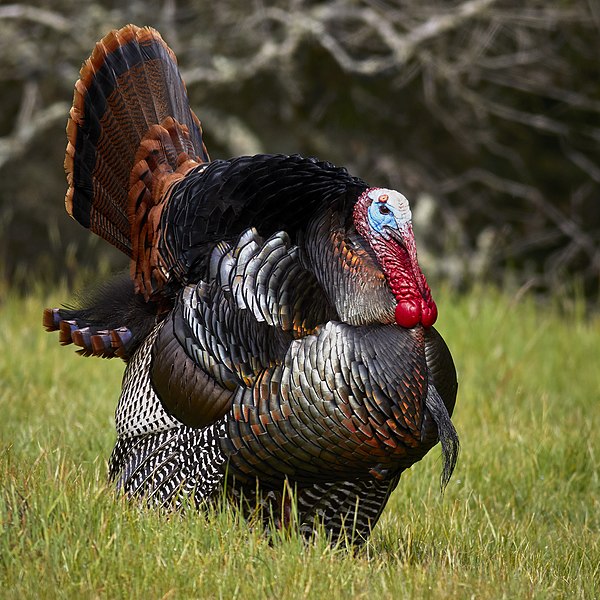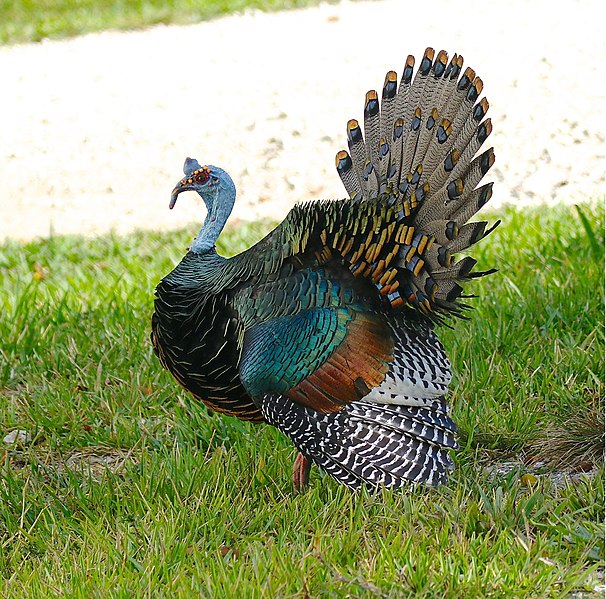The turkey is a large bird native to North America. There are two extant turkey species: the wild turkey (Meleagris gallopavo) of eastern and central North America and the ocellated turkey (Meleagris ocellata) of the Yucatán Peninsula in Mexico. Males of both turkey species have a distinctive fleshy wattle, called a snood, that hangs from the top of the beak. They are among the largest birds in their ranges. As with many large ground-feeding birds, the male is bigger and much more colorful than the female.

Although native to North America, the turkey probably got its name from the domesticated variety being imported to Britain in ships coming from the Levant via Spain. The British at the time therefore associated the bird with the country Turkey and the name prevailed.

Merriam’s turkey are found throughout the Western United States primarily in the ponderosa pine forests of Colorado, New Mexico, and northern Arizona. They have been transplanted into the pine forests of Utah, Idaho, Washington, Oregon, California, Montana, Wyoming, and South Dakota. Gould’s turkey are only found in Arizona, New Mexico, and northern Mexico. In Arizona, wild turkeys can be found not only in ponderosa pine forest but also other vegetation types in elevations ranging from 3,500 to 10,000 feet. The best populations of Merriam’s, however, occur in the ponderosa pine forests north of the Gila River. The Gould’s occupy the sky island habitats in southeastern Arizona.

Gould’s turkeys are one of Arizona’s two native wild turkey species. They are slightly larger than Merriam’s turkey. Gould’s turkey were once found throughout southern Arizona. Gould’s were an important food source for those who settled and worked in the rugged lands of southern Arizona years ago. Between the Civil War and World War I, miners working in southern Arizona harvested Gould’s for many of their meals. By the time Arizona had legal hunting seasons in 1929, Gould’s Turkey had already disappeared from the scene. Gould’s now occupy only a few remote mountain ranges in Arizona. However, these birds are making comeback tracks in the Huachucas and other mountain ranges in southern Arizona.

Rio Grande turkey were recently introduced on the Arizona Strip at Black Rock Mountain. This terrain is similar to where the birds were transplanted from in Utah. The Rio Grande subspecies is very similar to the Merriam’s turkey, and it would take a side-by-side comparison to notice the differences. The Rio is slightly smaller and the banded accent tail-feathers are slightly darker. However, most notably are the primary wing feathers, the Rios are mainly black with small white accent bars, while the Merriams are white with small black accents. This turkey subspecies prefers areas with drainages and stream beds in relatively open brush and scrub country up to 6,000 feet in elevation.
